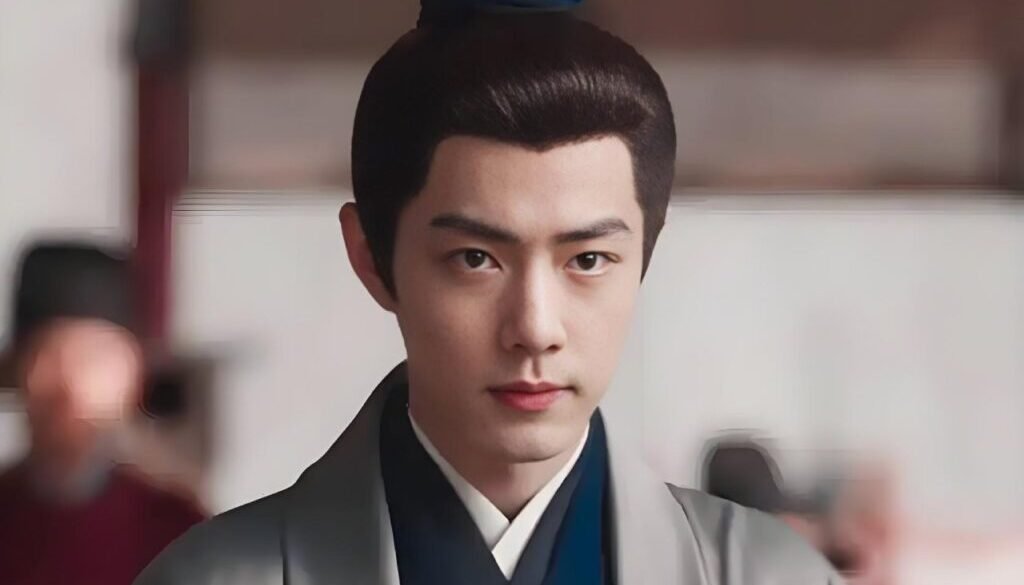Xiao Zhan’s ‘Legend of Zang Hai’ Breaks Global Records – What’s Fueling the Hype?”
When The Legend of Zang Hai premiered, no one expected it to break the internet within hours. Led by Chinese superstar Xiao Zhan, the political period drama surged past 10,000 heat index on Youku in just 38 hours—setting a platform record. But its influence didn’t stop there. Across Southeast Asia, the series topped Disney+ charts in Taiwan and trended in Malaysia, Singapore, and Thailand. This isn’t just another hit show—it’s a milestone in the rise of the global C‑drama phenomenon. With layered storytelling, international aesthetics, and a star actor at its helm, Zang Hai is reshaping how Chinese television travels the world.
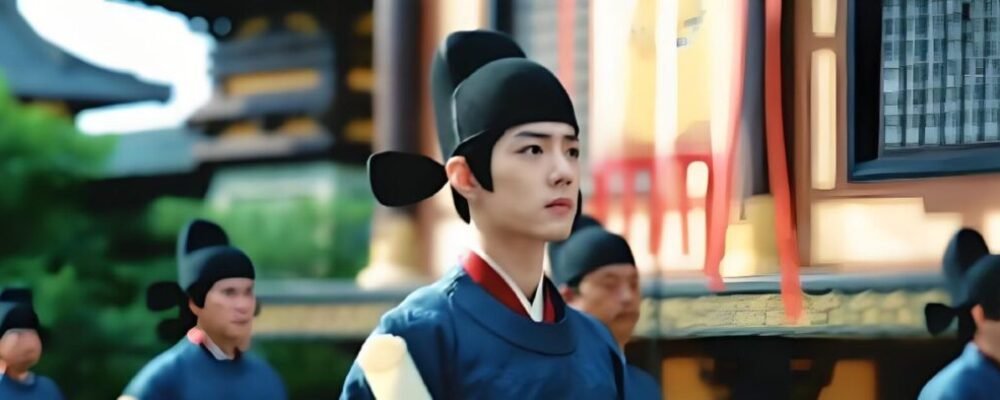
Chapter 1: Zang Hai’s Debut — A Global C-Drama Disruption
Zang Hai Becomes the Torchbearer of Global C‑Drama
The Legend of Zang Hai didn’t just premiere—it exploded. Within 38 hours, the show surged past 10,200 heat index on Youku, becoming one of the fastest-rising dramas in the platform’s history. This wasn’t a fluke. With its compelling narrative and Xiao Zhan’s nuanced dual-role performance, Zang Hai set a new benchmark for global C-drama storytelling.
What made it different? For starters, the drama launched simultaneously across mainland China (Youku), Taiwan (Disney+), and Southeast Asia (Viu), signaling an intentional push for cross-border resonance. Within the first 72 hours, it topped trending charts in Malaysia, Thailand, and Singapore, and clips from key episodes dominated YouTube, including this pivotal moment of character reveal (Watch here).
But Zang Hai’s impact isn’t just digital. The show is actively shifting how audiences perceive Chinese political period dramas. According to fan reviews and professional critiques, the balance of court intrigue, human depth, and visually rich sets offers a unique entry point for global audiences unfamiliar with the genre.
This is especially relevant for those already following the evolution of C-dramas from niche interest to international powerhouse. If you’re tracking the rise of Chinese storytelling, check out our breakdown of Xiao Zhan’s journey from obscurity to global fame and how The Untamed helped shape modern expectations of the genre.
As more platforms race to acquire content like Zang Hai, the focus keyphrase “global C-drama” is no longer speculative—it’s now a certified reality. Expect Zang Hai to lead future discussions on China’s soft power expansion through storytelling.
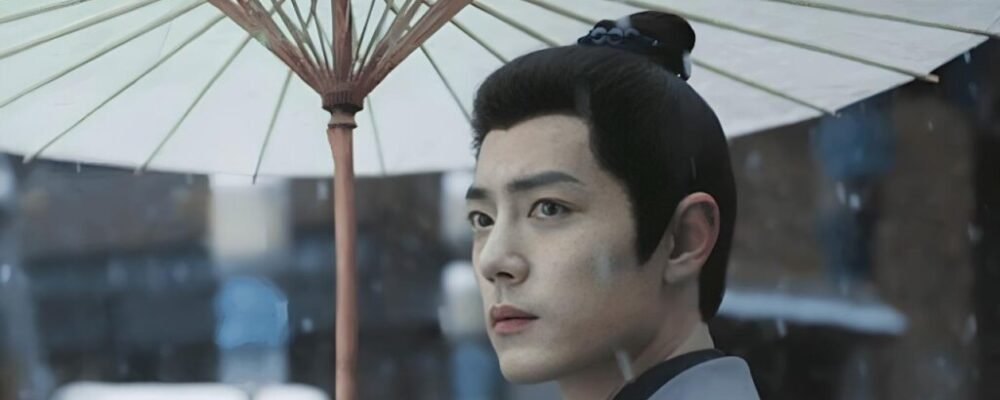
Chapter 2: Platform Power — How Zang Hai Conquered Youku, Disney+ and Viu
Zang Hai Sets the Global Stage for C‑Drama Dominance
The success of The Legend of Zang Hai isn’t just about star power—it’s about platform strategy. Its distribution model marks a new era for global C-drama reach, where content isn’t confined by borders or delayed release windows. This is a case study in how to launch a Chinese drama with global ambitions.
On Youku, the show broke internal records by surpassing 10,000 heat index within less than two days. By comparison, other hit dramas took at least four to five days to reach that milestone. The user engagement numbers skyrocketed across trending topics on Weibo, with over 50 hot search entries in its debut week, signaling massive domestic traction.
Internationally, the series premiered on Disney+ in Taiwan and Hong Kong and quickly became the No. 1 most-watched Chinese-language drama on the platform that week. Meanwhile, on Viu, the streaming app that dominates Southeast Asia, Zang Hai entered the Top 5 rankings in Malaysia, Thailand, and Singapore within 72 hours of launch. (See chart highlights in this official summary clip).
This broad distribution reflects a coordinated plan: launch simultaneously across key Mandarin-speaking and international markets to maximize real-time buzz. And it worked. Even TikTok trends emerged using hashtags like #ZangHai, #XiaoZhanLegend, and #CdramaRevolution. International fan accounts shared side-by-side reaction videos and created edits from emotionally charged scenes. The virality was organic, global, and fast.
To understand how we arrived here, revisit our article on how The Untamed’s success reshaped streaming strategies, or explore how Xiao Zhan’s iconic appeal drives consistent cross-platform engagement.
This multi-platform triumph confirms one thing: Zang Hai didn’t just land—it conquered. And the C-drama industry will be studying this release model for years.
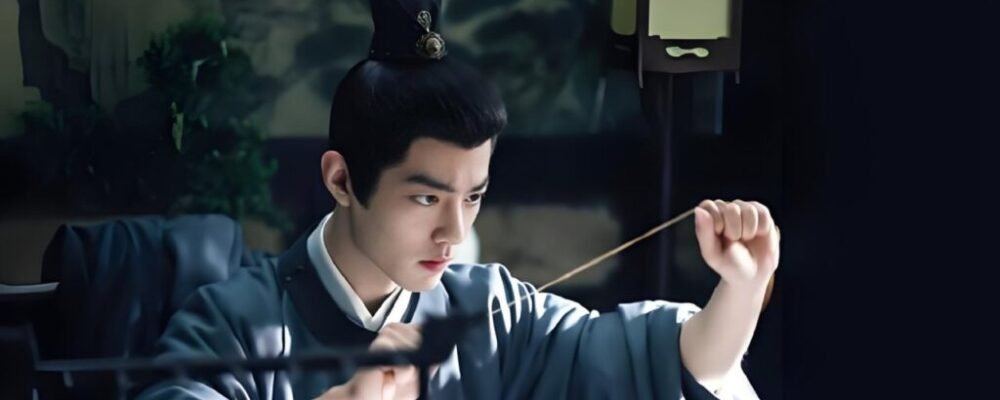
Chapter 3: Heat Index, Ratings & Buzz — Zang Hai by the Numbers
The Metrics Behind the Rise of a Global C‑Drama
Beneath the fanfare and aesthetics of The Legend of Zang Hai lies a set of hard numbers that prove its cultural firepower. From real-time charts to user reviews, Zang Hai isn’t just a popular drama—it’s a verified global C-drama phenomenon.
Within 38 hours of release, Zang Hai crossed the 10,200 heat index threshold on Youku—the platform’s internal benchmark for explosive popularity. This made it the fastest drama in 2025 to reach the 10k mark. Most productions take between 3 to 5 days to hit the same target. According to Douban (China’s equivalent of IMDb), the show debuted with a strong 7.1 rating, which later climbed as fan response deepened.
Globally, the momentum extended to streaming and social media. On Disney+, it topped the Mandarin-language charts in Taiwan, while on Viu, it ranked in the Top 3 in Malaysia and Thailand within days. Engagement across Twitter/X and TikTok exploded with hashtags like #ZangHai, with edits reaching millions of views in under a week (watch fan edit).
User sentiment has been overwhelmingly positive. Critics and casual viewers alike praise the “tight political drama structure,” Xiao Zhan’s “range and layered performance,” and the drama’s “world-class visual language.” This level of acclaim isn’t new for Xiao Zhan. As explored in his acting evolution article, his ability to balance restraint and intensity has been central to his rise as a pan-Asian megastar.
Notably, review aggregators and fan forums also reflect a shift in the type of viewer engaging with the show. Zang Hai is attracting not just C-drama fans, but also first-time viewers drawn in by the high production values and compelling political arc—an expansion of the genre’s reach, and a clear indicator of what’s next for the global C-drama market.
For a broader context on how fan-driven momentum shapes numbers like these, check out our feature on Bojun Yixiao’s fan economy impact.
The message is clear: Zang Hai isn’t just successful—it’s setting new standards for how Chinese dramas can dominate both domestically and worldwide, one metric at a time.
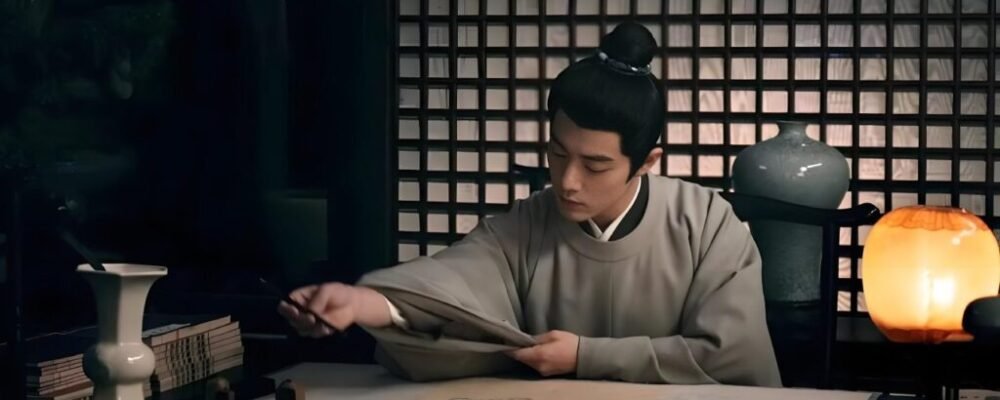
Chapter 4: Xiao Zhan’s Double-Faced Brilliance — Acting that Anchors a Global C-Drama
From Subtlety to Shock — Xiao Zhan Commands Zang Hai
Every hit drama needs a performance that holds the entire story together. In The Legend of Zang Hai, Xiao Zhan doesn’t just deliver—he dominates. Playing dual roles with opposing motivations, he transforms Zang Hai from a traditional historical thriller into a masterclass of acting range that redefines expectations for global C-drama leads.
Xiao Zhan portrays both the stoic strategist Chu Beichen and his secret alter ego, the rogue reformer Xie Yu. The two characters are opposites—one measured and political, the other raw and radical—yet Xiao transitions between them with chilling ease. In emotional scenes, his facial expressions shift from vulnerability to veiled threat in seconds, earning praise from critics and trending hashtags like #XiaoZhanActingGodLevel on Weibo and TikTok. For visual proof, don’t miss this fan-edited scene split.
This isn’t Xiao Zhan’s first transformative role, but it may be his most layered to date. His earlier success in The Untamed introduced global viewers to his charisma, but Zang Hai shows us a refined, matured actor capable of playing the long political game. Explore his journey in depth in our spotlight: Xiao Zhan’s Rise: Between Light and Shadow.
Even co-star testimonials back this up. Veteran actor Liu Yijun, who plays the chancellor in Zang Hai, commented in interviews that Xiao’s discipline and precision on set were “the kind you only see in theater-trained veterans.” Director Zheng Xiaolong also noted that Xiao’s double-role control was “beyond expectations,” calling him “one of the most intuitive actors of his generation.”
His performance isn’t just a career milestone—it’s also driving Zang Hai’s crossover appeal. International fans are discovering his work via dubbed versions, and subtitled scenes have gained millions of views on global platforms. This positions Xiao not just as a local idol but as a leading figure in the globalization of Chinese storytelling.
If you’re new to Xiao Zhan, catch up on his broader impact in our profile: From Obscurity to Global Fame, or explore how his partnership with Wang Yibo previously helped ignite fandom power in The Untamed Legacy.
In a landscape where acting often plays second fiddle to visuals, Zang Hai proves that performance—especially one as precise and versatile as Xiao Zhan’s—is what truly fuels a global C-drama’s longevity.

Chapter 5: Visual Power — Cinematic Precision That Elevates Zang Hai
How World-Class Design and Cinematography Drive Global C‑Drama Appeal
If plot and acting are the heart of a drama, then visual storytelling is its skin—what first captures attention, keeps audiences immersed, and defines international success. In The Legend of Zang Hai, the production team spared no detail in creating a world that looks and feels like a cinematic epic, redefining the visual bar for global C-drama exports.
From its opening sequence—choreographed with drone shots, fire-lit silhouettes, and palace backdrops—to the intricately hand-stitched costumes, Zang Hai is a visual feast. Each character’s wardrobe reflects class, psychology, and evolving political alliances. Xiao Zhan’s dual characters wear starkly contrasting palettes: icy silver for Chu Beichen’s restraint and shadowed indigo for Xie Yu’s rebellion. Costume designer Lu Yan’s use of natural fibers, embroidered insignias, and functional layering has already sparked social media breakdowns and cosplay interest. (For reference, watch the visual breakdown here).
Set design also plays a massive role. Zang Hai’s primary palace court was constructed on-location over six months, incorporating Tang and Song Dynasty influences into a hybrid style. The production used minimal CGI, opting instead for practical lighting, shifting architecture, and dynamic use of real space. This tactile realism echoes what made The Untamed so visually iconic (read our retrospective).
Cinematographer Li Zekun, previously known for his work in Nirvana in Fire 2, brings a signature mix of symmetry, shadow-play, and fluid camera movement that adds emotional depth to dialogue-heavy scenes. A key example is Episode 4’s night market scene, where handheld cameras and candlelight create a painterly tension (watch the YouTube clip).
These choices aren’t aesthetic luxuries—they’re export strategies. International viewers are used to high standards set by shows like Game of Thrones or Kingdom. By investing in elite production design, Zang Hai speaks the global visual language fluently, inviting comparison—not imitation.
To explore how these production values connect to broader C-drama trends, check out our industry insight: From Xianxia to Prestige Drama: The Untamed’s Impact.
With Zang Hai, China isn’t just producing content—it’s producing cinema-grade drama designed to travel. This isn’t just good TV. It’s cultural currency in 4K.
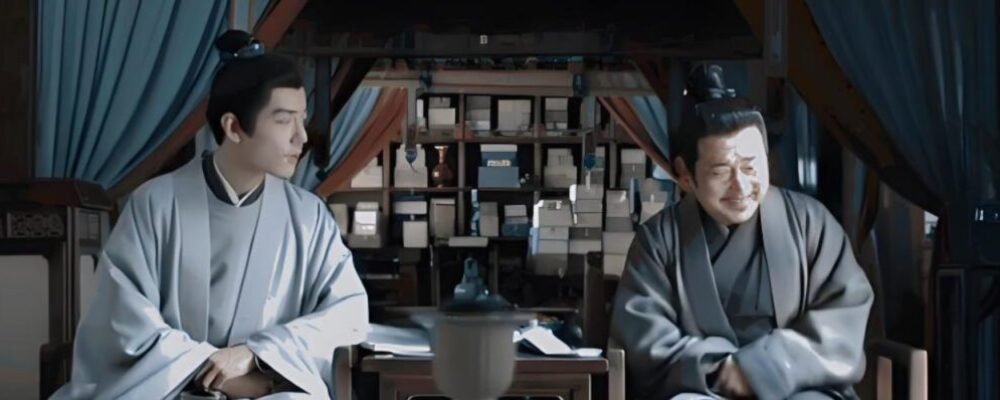
Chapter 6: Global Reach — How Zang Hai Is Trending Beyond China
From Southeast Asia to Streaming Charts — The Global C‑Drama Footprint Expands
In the era of digital streaming, a drama’s true power lies not just in domestic ratings, but in how far it travels. The Legend of Zang Hai has done more than trend—it has charted a new path for how global C-dramas are launched, received, and obsessed over outside of China.
In Taiwan, the series debuted on Disney+, instantly securing the No. 1 spot for Mandarin-language content during launch week. In Malaysia, Singapore, and Thailand, Zang Hai entered Viu’s Top 5 Most-Watched within three days. Social media platforms like TikTok and Twitter/X saw regional trends under hashtags like #ZangHaiEp1, #XiaoZhanThailand, and #CDramaExplosion. Some fan-made translations and reaction clips (like this Thai edit) gained hundreds of thousands of views within 48 hours.
Unlike previous C-dramas that relied on niche communities, Zang Hai broke into the mainstream. In regions like Southeast Asia, the show appealed to multi-generational audiences, from Gen Z K‑drama fans to older viewers drawn to historical political thrillers. This broad appeal is partially due to its hybrid genre—combining costume drama aesthetics with modern pacing, geopolitical intrigue, and emotional complexity.
Meanwhile, global platforms like YouTube, Instagram, and fan sites have seen increased traffic on posts related to Xiao Zhan and Zang Hai. A popular fan article from Southeast Asia compared Zang Hai to Korean megahits like Mr. Sunshine, praising its “production integrity” and “transnational story themes.” Even users from the U.S. and Europe are picking it up—especially after seeing Xiao Zhan trending globally again.
The international embrace of Zang Hai is the payoff of long-term cultural groundwork. Just like The Untamed broke barriers in 2019 (full story here), Zang Hai carries the torch into a broader, more prepared world. Today’s viewers have been primed for subtitles, cultural specificity, and storylines that don’t pander to Western norms—and they’re rewarding that authenticity with attention and loyalty.
For more context on how previous dramas paved this road, revisit our article on Xiao Zhan’s transformation into a global actor and how fandoms have evolved into cultural amplifiers.
Zang Hai didn’t just go global. It proved that the world is ready—and hungry—for Chinese storytelling told on Chinese terms.
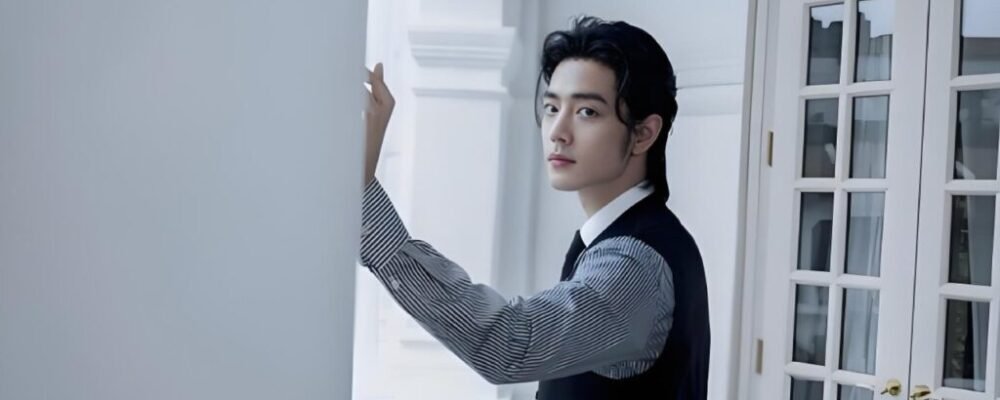
Chapter 7: Cultural Impact — Zang Hai and the Rise of Chinese Soft Power
How a Global C‑Drama Became a Soft Power Success Story
What makes a drama more than just entertainment? When it shapes perception, fosters understanding, and redefines cultural identity—that’s soft power. And The Legend of Zang Hai is the latest, sharpest example of how Chinese content is stepping confidently into that role.
Through its compelling narrative, refined production, and strategic international rollout, Zang Hai serves as a cultural export designed to do more than draw views. It reflects shifting values: a thirst for homegrown political intrigue, nuanced heroes, and historical stories told through a modern lens. Unlike older dramas that softened edges for global audiences, Zang Hai leans into complexity—and the world responded.
This isn’t the first time Chinese television has flirted with international influence. The Untamed arguably laid the foundation (see legacy analysis). But Zang Hai levels up the ambition: it’s not about accidental global reach—it’s about intentional cultural presence. The choice to premiere across platforms like Disney+, Viu, and Youku International speaks volumes. This wasn’t a one-country hit; it was a globally coordinated media moment.
As a result, global audiences are now engaging not just with the plot but with Chinese aesthetics, historical narratives, and philosophical themes—confucian loyalty, political reform, filial pressure. And they’re doing so on Chinese terms, not filtered or flattened for export. That is cultural diplomacy in real time.
This shift has even reached academic and journalistic spaces. Articles in Southeast Asian publications and content review platforms now cite Zang Hai when discussing the evolution of China’s “drama diplomacy.” Reaction videos on YouTube such as this editorial breakdown explore not only the story, but its role in soft power strategy.
Want to understand how Zang Hai fits into China’s larger entertainment push? Read more in our deep-dive: Bojun Yixiao Phenomenon & Entertainment Realignment, or explore how Xiao Zhan and Wang Yibo represent China’s exportable image.
By blending artistry with global accessibility, Zang Hai confirms what fans and media insiders already know: the age of global C-drama isn’t coming. It’s already here.

Chapter 8: Why You Should Jump on This Wave — Takeaways for Viewers & Brands
Zang Hai Isn’t Just a Drama. It’s a Movement.
You’ve seen the numbers. You’ve read the reviews. You’ve watched the clips. Now here’s the takeaway: The Legend of Zang Hai is more than a series—it’s a signal. A signal that global C-dramas are no longer niche, and that Chinese content is not just competing with global entertainment—it’s helping define it.
For Viewers:
If you’re still sleeping on C-dramas, Zang Hai is your best entry point. It doesn’t rely on fantasy tropes or nostalgia—it’s sharp, grounded, and filled with political complexity and character evolution that rivals top-tier Western dramas. The production is cinematic. The writing is tight. And Xiao Zhan’s dual-role performance delivers tension and nuance rarely seen in television.
Missed the Untamed era? This is your second chance to join something big as it happens. And if you’ve already been here since the Bojun Yixiao days, Zang Hai is your proof that Chinese storytelling just hit its next level.
For a nostalgic look at how far fandom and quality have come, revisit our retrospective: Bojun Yixiao: The Chemistry That Redefined On-Screen Friendship.
For Brands, Platforms & Cultural Gatekeepers:
Take notes. This isn’t a fluke. The success of Zang Hai proves there’s a mature, global audience hungry for Asian content that doesn’t compromise its cultural DNA. Whether you’re in entertainment, fashion, media, or marketing—C-dramas are a cultural force worth aligning with.
Just as K-dramas became style-setters and brand magnets in the past decade, Chinese dramas like Zang Hai are carving a parallel path. The audience is active, global, multilingual—and ready to spend. If your platform or product isn’t engaging with this movement, you’re already behind.
Explore how Xiao Zhan’s global positioning is affecting brand partnerships in our feature: Xiao Zhan: From Performer to Powerhouse.
Final Word:
The Legend of Zang Hai isn’t just a content milestone—it’s a cultural shift. Whether you’re a casual fan, a new viewer, a brand strategist, or a critic, now’s the time to pay attention.
Because global C-drama is no longer knocking on the door—it’s already inside.
